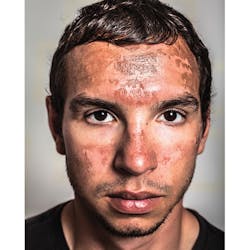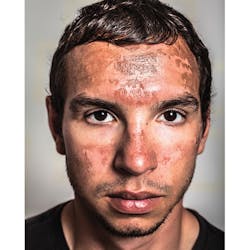Patients who enjoy the sun
Consider behavioral counseling for skin cancer prevention during health history
Joann R. Gurenlian, RDH, PhD
The US Preventive Services Task Force (USPSTF) recently updated the 2012 recommendation on behavioral counseling for the primary prevention of skin cancer, as well as the 2009 recommendation on screening for skin cancer with self-examination. Skin cancer remains the most common type of cancer in the US, and it is important to provide patients with key information about sun protection.
As we enter into the summer months, we’ll be seeing patients who are sun worshipers. Dental hygienists have the perfect opportunity to use current evidence to encourage these patients to be mindful and use sun protection practices. However, a close examination of the evidence makes me wonder if this particular science and the associated recommendations make sense. Allow me to explain.
The USPSTF conducted a systematic review that examined current studies on skin cancer prevention and skin cancer detection, including four new trials in pediatric populations and 10 new trials in adult populations. Earlier studies were also included, for a total of 21 studies. The conclusions and recommendation are as follows:
“The USPSTF recommends counseling young adults, adolescents, children, and parents of young children about minimizing exposure to UV radiation for persons aged 6 months to 24 years with fair skin types to reduce their risk of skin cancer (B recommendation). The USPSTF recommends that clinicians selectively offer counseling to adults older than 24 years with fair skin types about minimizing their exposure to UV radiation to reduce the risk of skin cancer. Existing evidence indicates the net benefit of counseling all adults older than 24 years is small. In determining whether this service is appropriate in individual cases, patients and clinicians should consider the presence of risk factors for skin cancer (C recommendation). The USPSTF concludes that the current evidence is insufficient to assess the balance of benefits and harms of counseling adults about skin self-examination to prevent skin cancer (I statement).”1
Dental hygienists have the perfect opportunity to use current evidence to encourage these patients to be mindful and use sun protection practices.
If we perform a cursory read of these recommendations, they almost seem reasonable. But, if we read the actual evidence report by Henrickson et al.,2 and the editorial posed by Robinson and Jablonski,3 a different point of view emerges. For example, the majority of studies included in the systematic review were of individuals who were classified as white and had fair skin. Further, the time frame involved was limited to three to six months in many studies. Therefore, detection of nevi (birth marks or moles) or cancer was likely not possible.
Robinson and Jablonski question whether fair skin type is an appropriate category for current research when considering that there are large groups of people who sunburn easily and do not have ivory or pale skin. They recommend modifying the risk category of fair skin to “sunburn easily” or “sun-sensitive skin,” referencing that Hispanic and African American people have varying sun sensitivities. Further, they note that looking at hair and eye color, such as blond hair and blue eyes, does not reliably predict one’s skin response to sun exposure. After all, I have brown hair, brown eyes, and medium skin, and I burn to a crisp if I’m in the sun for even a short time and with the use of sun protection.
While the USPSTF and others who perform research about sun sensitivity and sun protection may need to update their research approaches and recommendations, we oral health professionals can do our part to provide preventive health messages. When we see patients who are clearly past the mild bronze tones from indoor tanning or are bright red from sun overexposure, talk to them about minimizing exposure to UV radiation and risks for skin cancers. Double check patients’ health histories and remind those who are taking photosensitizing medication, such as thiazide diuretics and tetracycline, to avoid the sun. When we have patients with 50 or more nevi or atypical nevi, recommend they visit a dermatologist for an evaluation.
Most people don’t know how to gauge sun intensity and UV index. However, there are apps that automatically provide this information. Encourage patients to check the UV index daily when planning outdoor activities to be safe from sun exposure and to minimize UV radiation. Let’s all enjoy those lazy, hazy, crazy days of summer with less risk for melanoma and basal cell and squamous cell carcinomas.
JOANN R. GURENLIAN RDH, PhD, is president of Gurenlian & Associates, and provides consulting services and continuing education programs to health-care providers. She is a professor and dental hygiene graduate program director at Idaho State University, and past president of the International Federation of Dental Hygienists.
References
1. US Preventive Services Task Force. Behavioral Counseling to Prevent Skin Cancer: US Preventive Services Task Force Recommendation Statement. JAMA. 2018;319(11):1134-1142.
2. Henrickson NB, Morrison CC, Blasi PR, et al. Behavioral Counseling for Skin Cancer Prevention: Evidence Report and Systematic Review for the US Preventive Services Task Force. JAMA. 2018;319(11):1143-1157.
3. Robinson JK, Jablonski NG. Sun Protection and Skin Self-examination and the US Preventive Services Task Force Recommendation on Behavioral Counseling for Skin Cancer Protection. JAMA. 2018;319(11):1101-1102.


